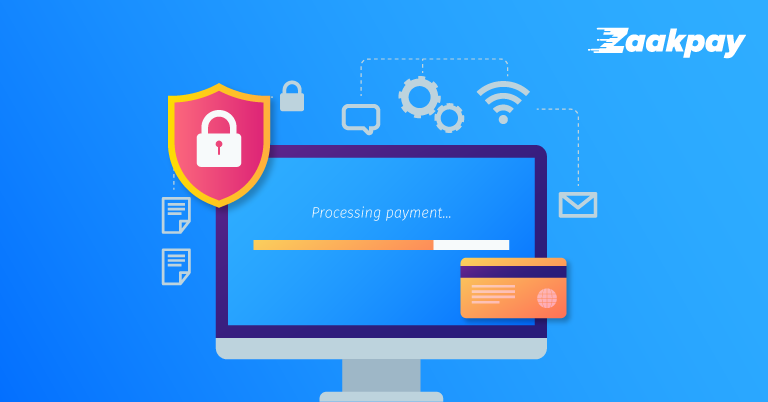With the turn of centuries, change is inevitable. Economies across the globe are rapidly evolving. Revolution constantly determines value orientation. Value means wealth involvement. Modes of transactions are also changing courses. Online payments, especially with the advent of eCommerce, are on the rise. Multiple payment gateways, like Zaakpay, have emerged for transactional purposes to cater to the needs of customers, and therefore, they are in rising demand.
The purpose of online payments is the prevention and protection of data and security. Fraud is the greatest threat of recent times. To curtail the continual challenge of imposters, optimum security is mandatory. Layer per layer of data protection is ensured from period to period by adapting modes and methods of advanced technology. And when the several layers of data are completely encrypted and empowered by fraud protection tools, the merchant or establishment is comfortably ensured of securing online business activities.
Reliability Factor of Online Payments
There are plenty of tailor-made methods or measures ascertained for determining the reliability factors for eliminating fraudulent activities on a payment platform. Several online payment platforms across the world are actively seeking ways to eliminate disruption and related activities. Luckily, various Information Technology (IT) based technological powerhouses and eCommerce companies have largely succeeded from time to time in controlling fraud.
But, many companies on their payment gateways are constantly facing challenges with regards to ongoing threats. However, Zaakpay Payment Gateway is a one-stop-shop for collecting and disbursing payments in India. The trustworthy and secure Zaakpay Payment Gateway platform is a benchmark of repute; in terms of efficiency and in terms of disbursements or collections of payments with regards to online transactional activities.
Layers of Protection in Digital Payments
End-to-end security of data and the related factors is a huge responsibility, especially when it involves mass financial transactions and also legal compliances. However, responsible payment gateways, like Zaakpay, ensure measures have been secured technically and logically, compiled layer by layer with utmost priority for user-friendly, hassle-free usage.
SSL for secure connections:
An eCommerce website has a lot to protect. The site not only protects the details related to credit cards but also login forms, other payment gateway essentials, etc. To safeguard the details of essentials and information, it is always necessary to encrypt and protect data which is also a best practice from the viewpoint of security.
SSL or Secure Socket Layer is a layer that encrypts to secure the client’s information. In the online world, every piece of information holds a strong possibility of threat by hackers unless secured. It is where SSL Certificate comes into use by encrypting the data in transit which serves as a major security measure and layering protection.
PCI certificate:
PCI is the abbreviated form for the Payment card industry. The PCI certificate is a guide for merchants, enabling them to know the measures they need to follow to secure sensitive data. PCI is required and is a must for data processing of payments on websites. It is mandated, developed, maintained, and regulated by Payment Card Industry Data Security Standards (PCI DSS).
However, PCI compliance acts as a relaxation for merchants when they adopt the right payment provider. The Zaakpay payment gateway, in such instances, would abide by the industry security standards and follow data encryption, as required by PCI.
Tokenization:
Tokenization is apt for businesses that maintain a customer’s card on their file records. Card tokenization is suited when eCommerce site-related purchases are conducted; or while making payments where sensitive credit card information is required. Examples may include making payments on mobile wallets, for instance, MobiKwik.
Tokenization can be simply explained by citing the example of a credit card transaction. Credit cards are always associated with a risk in general. The cards are easy choices for fraudsters, imposters, and online hackers. When you pay using a credit card, you provide the card essentials such as the numbers on the card to complete a successful transaction. This is where Card tokenization comes as a relief measure.
In the case of payment processing, tokenization is a process where a random string of characters is generated to replace sensitive data such as that of a credit card. In the process of tokenization, the method which is followed for maximum protection of the card credentials is among the best. The card numbers collected by the computing device are tokenized just before the authorization of the transaction by a set of random computing characters; the method followed is secure and reduces the capability of the breach to a greater extent. The data generated in the process travels to a centralized server. And the information is securely vested in the centralized server machine. On the other hand, a unique number is generated on the merchant’s established computing system.
The token numbers generated on the merchant’s system acts as the substitute to the credit card numbers of the customer who has just made a successful transaction. The set of token numbers on the merchant’s end is a perfect replacement for the customer’s credit card numbers. Hence, the card data is perfectly substituted by the set of token numbers. In this entire process, none of the valued customer credentials are recorded, stored, or maintained at the merchant’s end. The methodology adopted in the whole transactional process ensures smoothness with a single click activity and security.
3D Secure authentication
Also referred to as Three Domain Secure authentication, 3D Secure authentication is a messaging protocol involving three domains. The authentication domains are the bank, the technology that processes the particular transaction, and the issuing bank. It is a layer that acts as an additional security measure preventing fraudulent acts like card not present transactions.
A 3D Secure Authentication can be successfully enabled by creating a 3D Secure pin after an online merchant website transaction. This can be done after selecting the products and by entering the bank’s card numbers.
Anti-fraud detection
Transactions are always scanned either manually or automatically by the computing devices at banks or similar establishments. The purpose of Anti-fraud detection is to scan and find out fraud-related activities. The preventive tools are used and operated generally by respective Anti-fraud detection departments.
Conclusion
To conclude, while you are making an online payment, it is imperative to remove card-related details after every transaction. You must ascertain that online merchants and business owners you deal with in transactions use encrypted payment services at all times. You must encourage the merchants to apply privacy policy norms. And to educate other customers regarding the same during payments processing. Customers must be proactive and safeguard themselves from fraud by all means by self-education and awareness.
Follow Us on:

